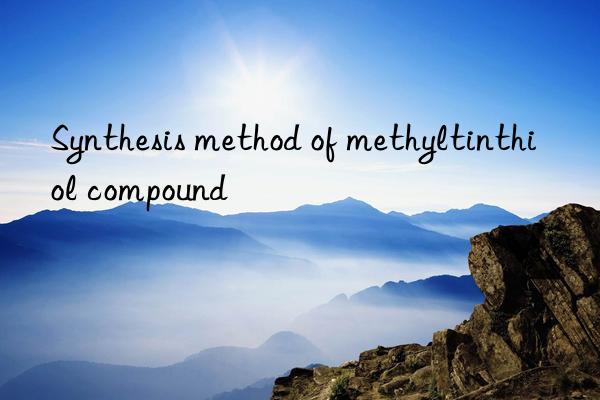
Methyl tin thiol compounds are an important class of organometallic compounds that are used in plastic stabilizers, agricultural chemicals, medicine, and materials science. It is widely used in other fields. Methods for synthesizing such compounds usually involve the reaction of methyltin compounds with thiols, and several common synthetic pathways will be discussed in detail below.
Overview of synthesis methods
The synthesis of methyltin thiol compounds usually follows the following basic steps: first prepare a precursor of methyltin, usually methyltin chloride; then, react this precursor with thiol under appropriate conditions to form The desired methyltin mercaptide compound.
Preparation of methyltin chloride
Methyltin chloride can be produced by reacting tin with methyl chloride at high temperature and pressure. This process usually requires a phase transfer catalyst, such as a quaternary ammonium salt or crown ether, to promote the reaction. The reaction conditions are generally temperature 210-240°C and pressure 1.0-1.3MPa. The generated methyltin chloride mixture also needs to control the content of trimethyltin chloride through a disproportionation reaction to make it less than 0.1%.
Synthesis of methyltin thiol
Direct reaction method
A straightforward synthesis method is to react methyltin chloride directly with thiols. For example, by reacting isooctyl mercaptopropionate with an aqueous solution of methyltin chloride under specific conditions, a mixture of isooctyl monomethyltin trimercaptopropionate and isooctyl dimethyldimethyldimercaptopropionate can be synthesized. Parameters such as reactant ratio, reaction temperature, and pH value are crucial to the purity and yield of the product.
Catalytic reaction method
Another method is to carry out the reaction in the presence of a catalyst, such as adding sodium sulfide and sodium bicarbonate as auxiliary reagents. The methyltin chloride compound intermediate aqueous solution is reacted with isooctyl thioglycolate, sodium sulfide, sodium bicarbonate and a catalyst in a synthesis kettle. After the reaction is completed, the target compound is separated and purified through steps such as layering, water washing, and vacuum distillation.
Synthesis method for controlling pH value
Another method is to control the pH value of the reaction system. For example, first dissolve methyltin chloride in water, then add inorganic alkaline substances to adjust the pH value to 6-8, then add mercaptans, such as isooctyl thioglycolate, and control the reaction temperature to 40-80°C. The time is several hours to prepare the target compound.
Reaction conditions and optimization
In order to obtain the best yield and selectivity, optimization of reaction conditions is crucial. This includes but is not limited to:
- Reaction temperature: Typically between room temperature and higher temperatures, depending on the starting materials used and the desired products.
- Reaction time: It ranges from a few hours to dozens of hours, depending on the reaction rate and the control of side reactions.
- Solvent selection: A suitable solvent can promote the reaction and avoid side reactions.
- PH control: In some synthetic routes, precise pH control is crucial to the success of the reaction.
Conclusion
The synthesis of methyltinthiol compounds is a complex but controllable process involving a variety of reaction conditions and optimization strategies. By carefully designing experimental conditions, a series of methyltinthiol compounds with specific structures and functions can be effectively synthesized to meet the needs of different fields. With the deepening of research, new synthesis methods and technologies will continue to emerge, bringing more possibilities to the development of this field.
Extended reading:
bismuth neodecanoate/CAS 251-964-6 – Amine Catalysts (newtopchem.com)
stannous neodecanoate catalysts – Amine Catalysts (newtopchem.com)
polyurethane tertiary amine catalyst/Dabco 2039 catalyst – Amine Catalysts (newtopchem.com)
N-Methylmorpholine – morpholine



 微信扫一扫打赏
微信扫一扫打赏
